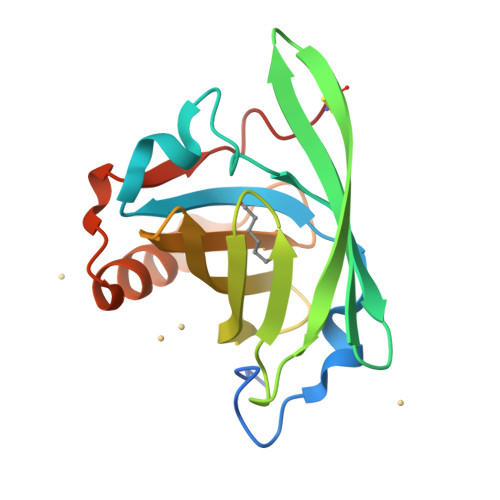Strong Solute-Solute Dispersive Interactions in a Protein-Ligand Complex.
Malham, R., Johnstone, S., Bingham, R.J., Barratt, E., Phillips, S.E., Laughton, C.A., Homans, S.W.(2005) J Am Chem Soc 127: 17061-17067
- PubMed: 16316253
- DOI: https://doi.org/10.1021/ja055454g
- Primary Citation of Related Structures:
1ZND, 1ZNE, 1ZNG, 1ZNH, 1ZNK, 1ZNL - PubMed Abstract:
The contributions of solute-solute dispersion interactions to binding thermodynamics have generally been thought to be small, due to the surmised equality between solute-solvent dispersion interactions prior to the interaction versus solute-solute dispersion interactions following the interaction. The thermodynamics of binding of primary alcohols to the major urinary protein (MUP-I) indicate that this general assumption is not justified. The enthalpy of binding becomes more favorable with increasing chain length, whereas the entropy of binding becomes less favorable, both parameters showing a linear dependence. Despite the hydrophobicity of the interacting species, these data show that binding is not dominated by the classical hydrophobic effect, but can be attributed to favorable ligand-protein dispersion interactions.
Organizational Affiliation:
Astbury Centre for Structural Molecular Biology, School of Biochemistry & Molecular Biology, University of Leeds, UK.


















